Akivarai Conversations
A workshop in experimental writing aiming to bring us closer to and help us learn from the non-humans of the Aukstumala swamp in Western Lithuania
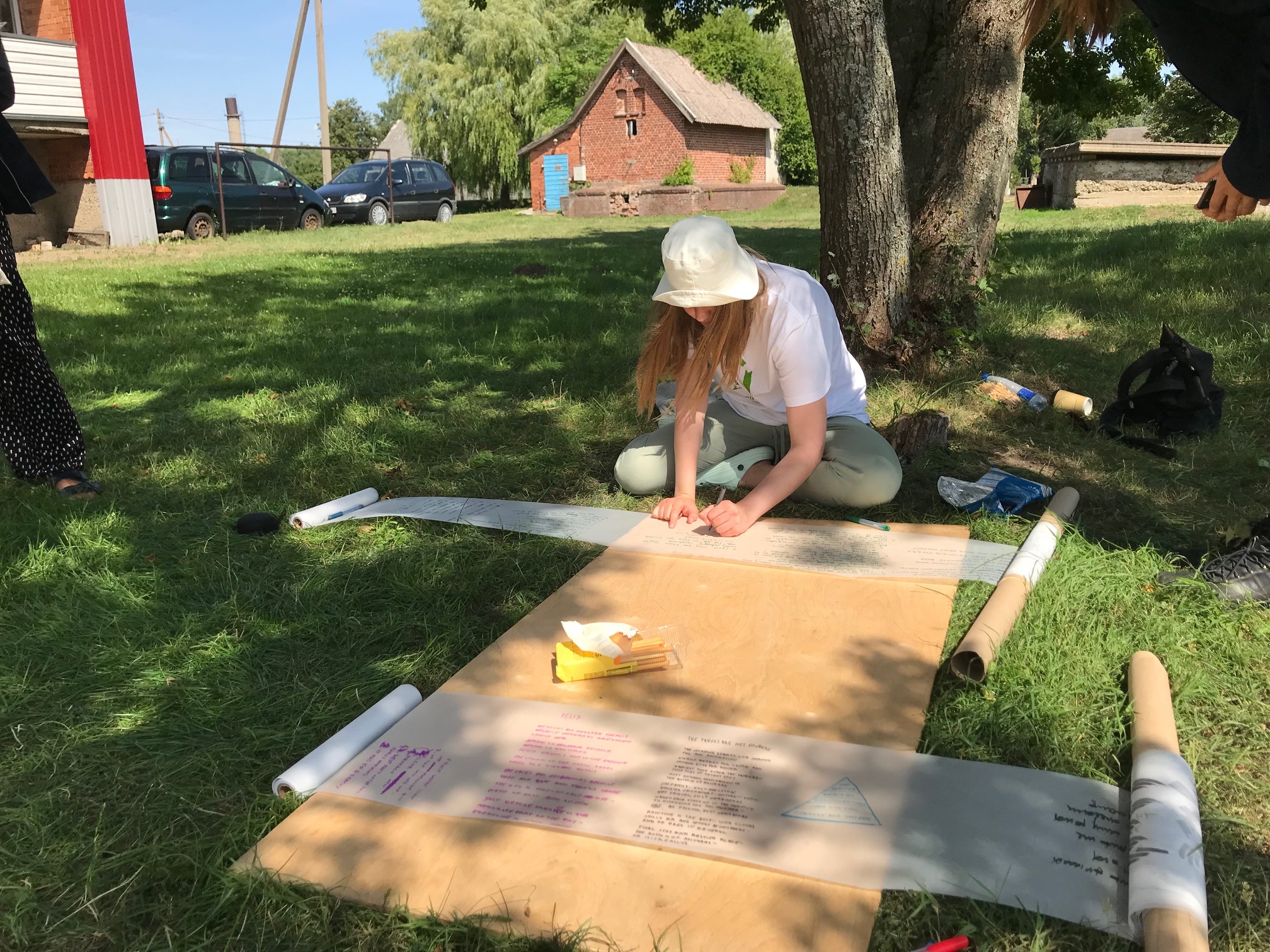
Akivarai
Akivarai
Lithuanian
1. [noun] Eyeglasses
2. [noun] A pool of water in a swamp
3. [verb] The opening of an eye
1. [noun] Eyeglasses
2. [noun] A pool of water in a swamp
3. [verb] The opening of an eye
Type of project:
Workshop, Experimental Writing, Non-Human Perspectives, Teaching
Year completed:
2023
Client:
Sikon architecture student festival [instagram]
Location:
The Sikon 35 architecture student festival, in Kintai and Aukstumala Swamp in Western Lithuania.
55.394779, 21.369467
Workshop, Experimental Writing, Non-Human Perspectives, Teaching
Year completed:
2023
Client:
Sikon architecture student festival [instagram]
Location:
The Sikon 35 architecture student festival, in Kintai and Aukstumala Swamp in Western Lithuania.
55.394779, 21.369467
In this age of the anthropocene it is more important than ever that we understand and reduce the impact of our work, if we are to avoid ecological collapse. It is well known, but not sufficiently acted upon. Not due to a lack of knowledge or ability, but a lack of empathy with and deep understanding of natural ecosystems.
I was invited by the organisers of the Sikon 35 architecture student festival to share my working process of working with and learning from non-human perspectives by teaching a 3-day workshop.

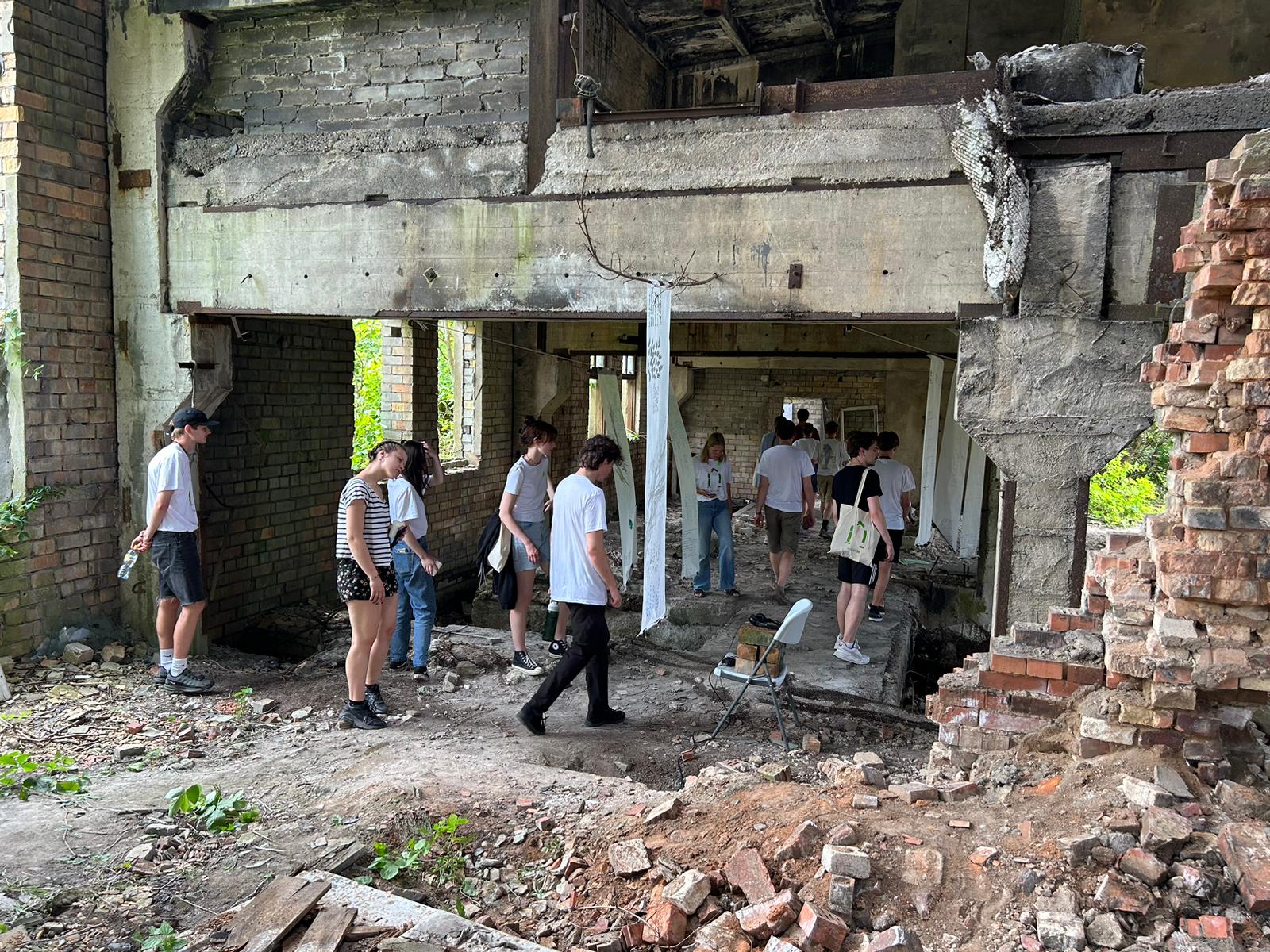






Based on my work with fungi and corals, the role of the architect in the Anthropocene was critically explored from non-human perspectives, through experimental writing and empathetic exercises. From there some design principles based on the pattern languages of architect Christopher Alexander were created. These can serve as guidelines for how to design spaces for the non-human, as well as design alternative spaces for the human, or to design shared spaces for both.
The results of the workshop were exhibited next to the results of the other workshops of the festival in the ruins of the old boiler room building in Kintai - a fitting location to discuss the unnecessary struggle between the human and the non-human
![]()
![]()
![]()
![]()
The results of the workshop were exhibited next to the results of the other workshops of the festival in the ruins of the old boiler room building in Kintai - a fitting location to discuss the unnecessary struggle between the human and the non-human
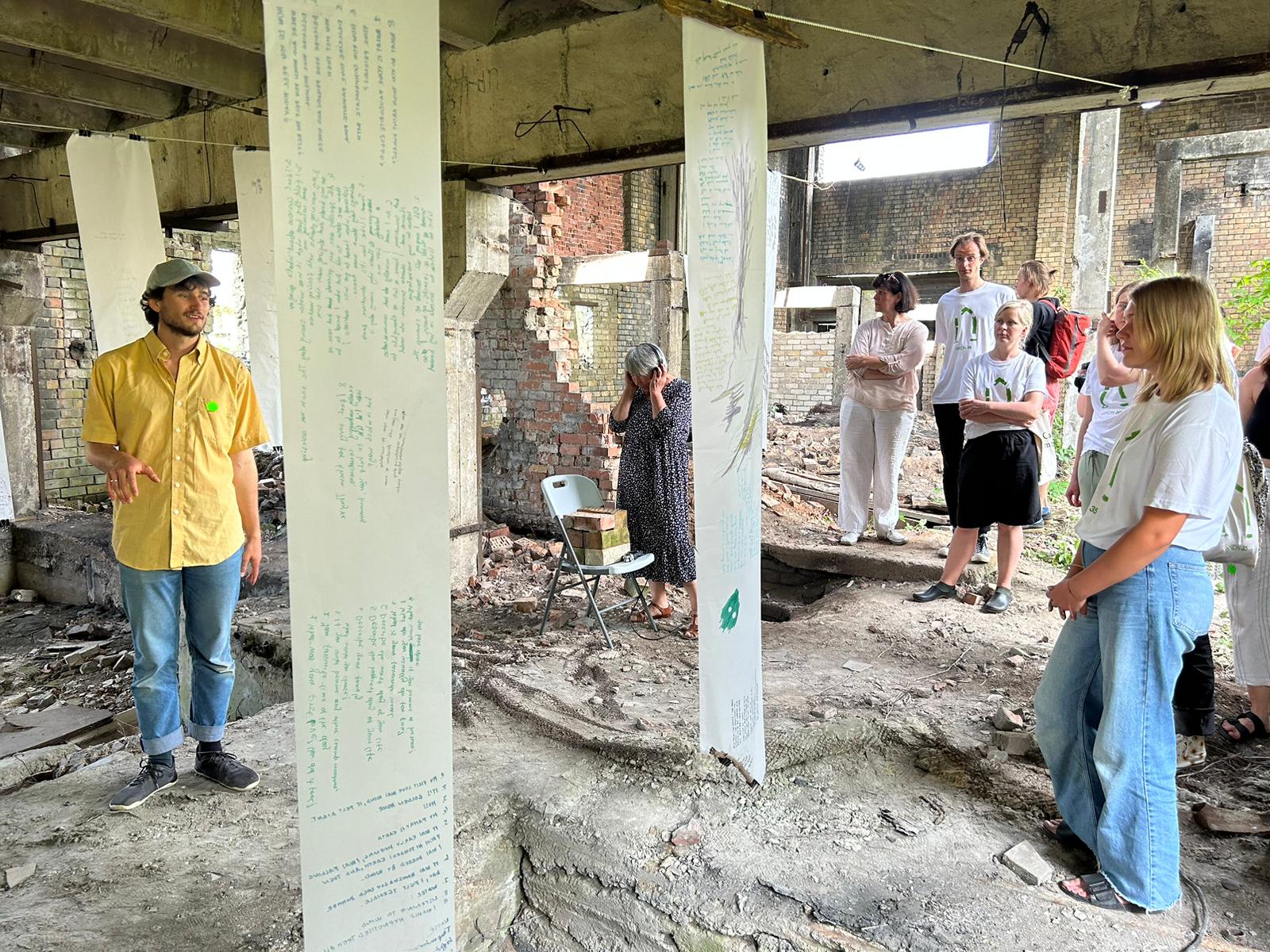
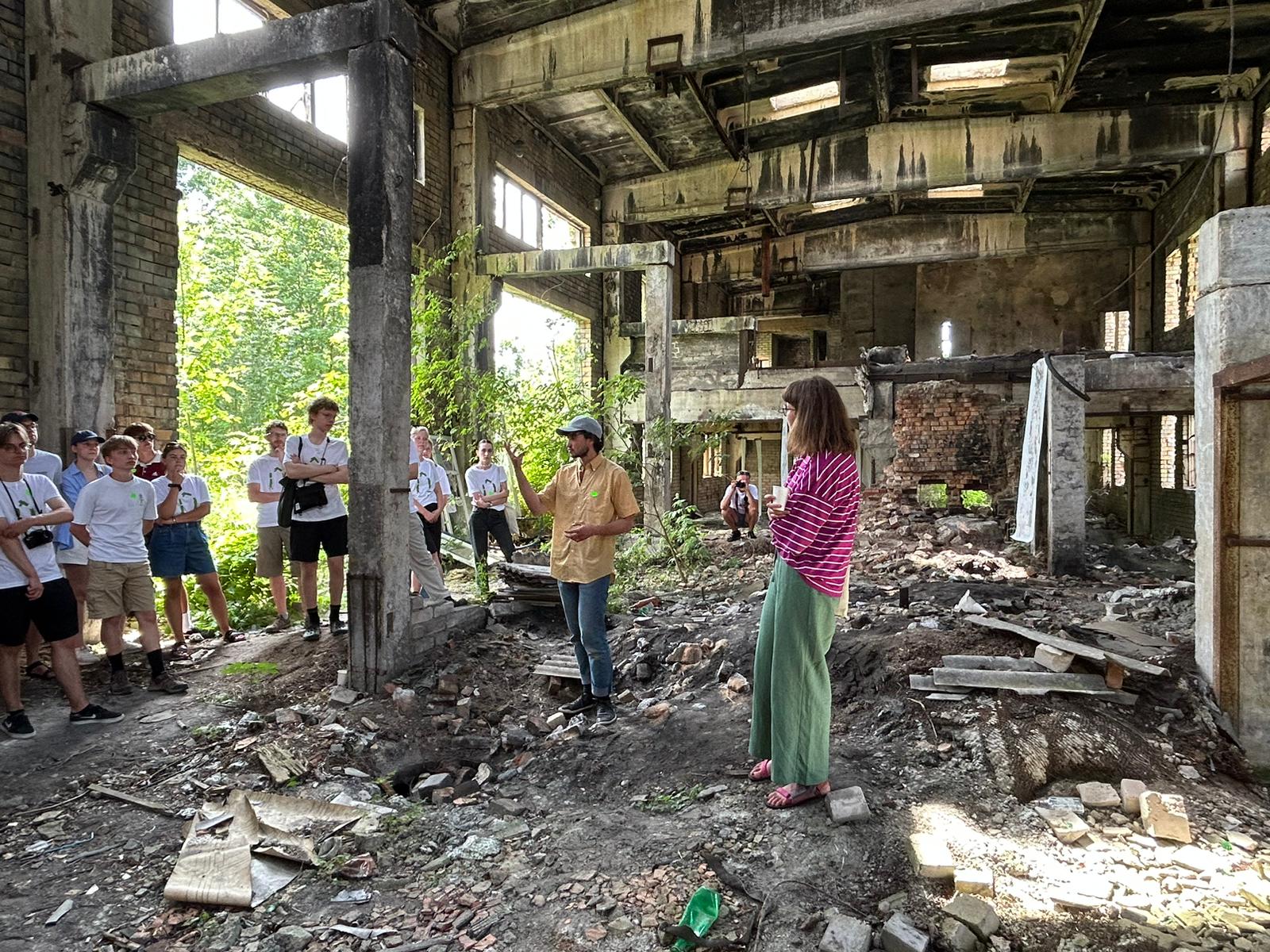


The Aukstumala swamp
is one of the largest wetlands in Lithuania, covering an area of almost 2,500 hectares. Swamps and wetlands [peat bogs] are the most effective carbon sinks on the planet, holding about 42% of all stored soil carbon, even if they only cover around 3% of Earth’s land surface. They are important ecosystems for birds and insects, and are sources of clean drinking water across the world.
Due to their wet, anaerobic conditions they have an incredibly slow decomposition rate, which means they also function as biological archives. Layers of compressed biomass [mostly sphagnum moss] can be extracted and researched to determine the exact climatic conditions they grew in, and eerily well preserved human remains buried deep within the bog can reveal fascinating details of life in times thousands of years away.
![]()
Workshop outline:
1. After lectures by activists on the importance of swamp ecosystems the students explored the Aukstumala swamp, and brought back with them a small item. A flower, a dead branch, a handful of seeds, a rock, some moss, a botttle of water, etc.
2. Through playful, informal, associative, experimetal and collaborative writing and drawing exercises the objects were explored. All tasks were done on rolls of tracing paper.
3. The objects were described in evocative imagery, until an idea of their mode of operation and relationships to their surroundings were gained.
4. Based on this understanding the objects were asked to describe us, and react to our descriptions of them.
5. After meditative exercises based on buddhist meditations and method acting techniques the objects were interviewed by each other.
6. Based on their answers a series of patterns were extracted.
7. The results were exhibited above voids in the boiler building, to emulate the Akivarai of the swamp.
![]()
is one of the largest wetlands in Lithuania, covering an area of almost 2,500 hectares. Swamps and wetlands [peat bogs] are the most effective carbon sinks on the planet, holding about 42% of all stored soil carbon, even if they only cover around 3% of Earth’s land surface. They are important ecosystems for birds and insects, and are sources of clean drinking water across the world.
Due to their wet, anaerobic conditions they have an incredibly slow decomposition rate, which means they also function as biological archives. Layers of compressed biomass [mostly sphagnum moss] can be extracted and researched to determine the exact climatic conditions they grew in, and eerily well preserved human remains buried deep within the bog can reveal fascinating details of life in times thousands of years away.
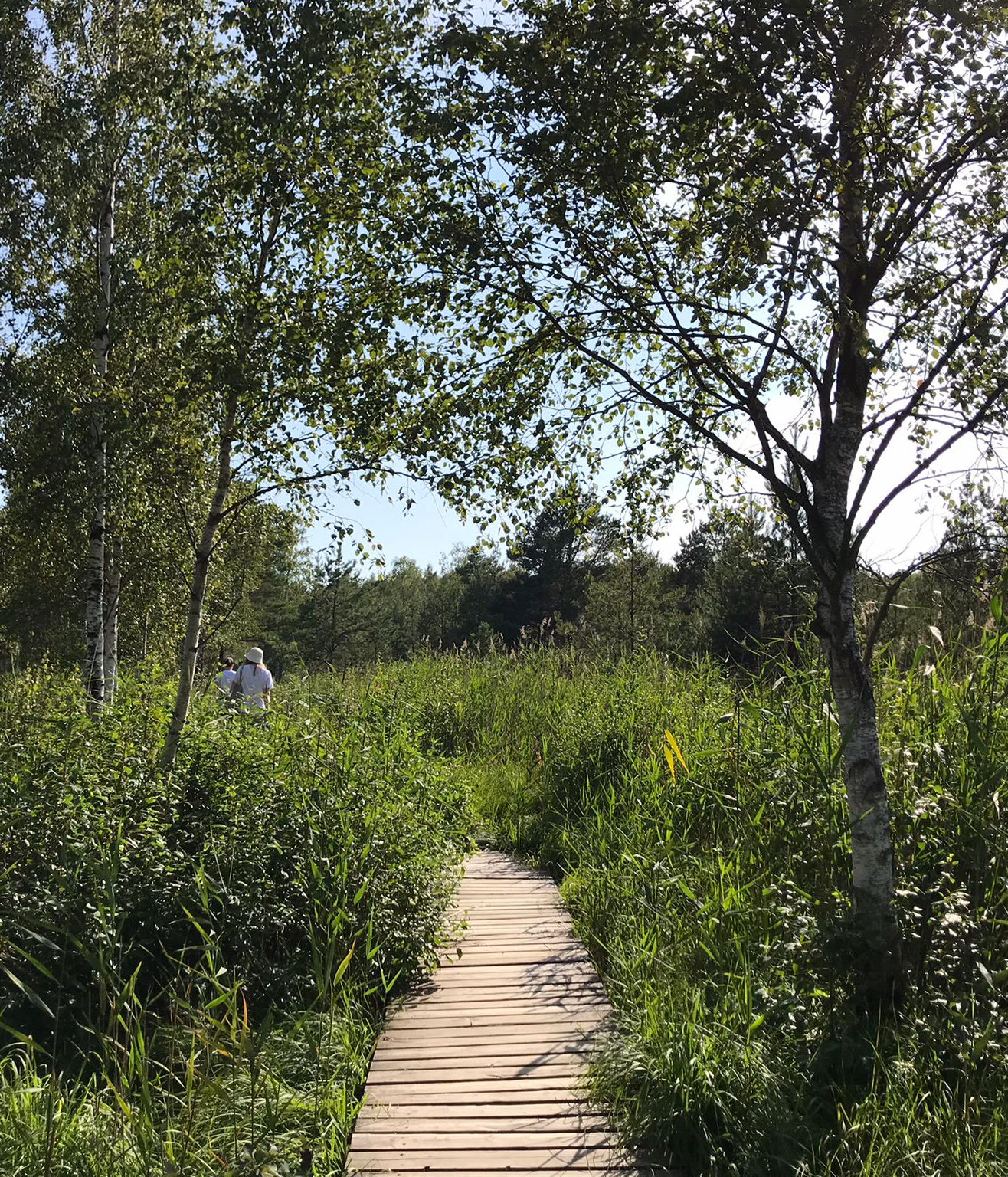
Workshop outline:
1. After lectures by activists on the importance of swamp ecosystems the students explored the Aukstumala swamp, and brought back with them a small item. A flower, a dead branch, a handful of seeds, a rock, some moss, a botttle of water, etc.
2. Through playful, informal, associative, experimetal and collaborative writing and drawing exercises the objects were explored. All tasks were done on rolls of tracing paper.
3. The objects were described in evocative imagery, until an idea of their mode of operation and relationships to their surroundings were gained.
4. Based on this understanding the objects were asked to describe us, and react to our descriptions of them.
5. After meditative exercises based on buddhist meditations and method acting techniques the objects were interviewed by each other.
6. Based on their answers a series of patterns were extracted.
7. The results were exhibited above voids in the boiler building, to emulate the Akivarai of the swamp.


Sadly, the Aukstumala swamp is being drained and the peat is extracted and used for fuel and as potting soil in agriculture, which releases all the stored carbon and ruins the fragile ecosystems. Since the 1820’s more than half of the swamp has been drained, and groups of activists have done what they can to stop further extraction. Most successful is a simple, non-intrusive “education trail” that allows visitors to move deep into the swamp without damaging it, while also building a sense of ownership to the area.


